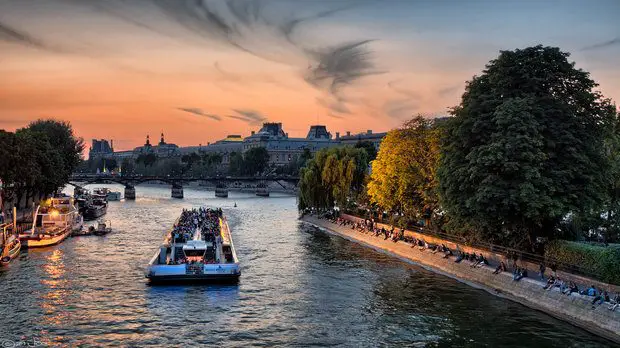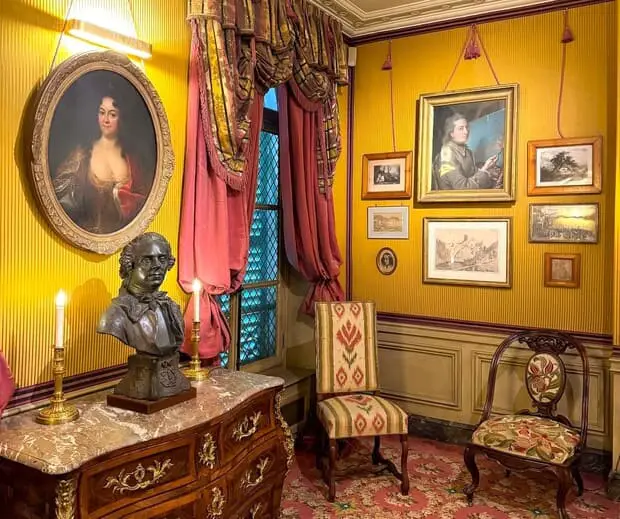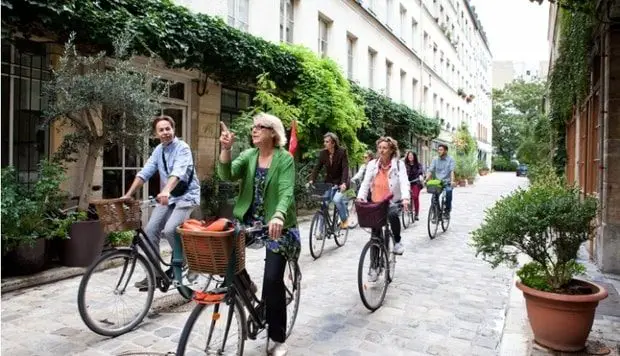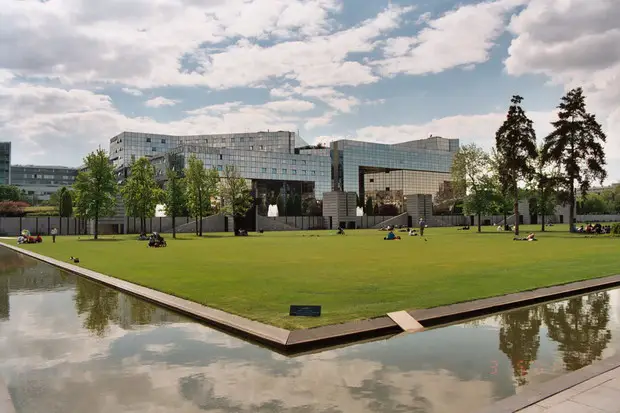Are you a resident of the City of Lights or a simple tourist? An evening traveler or a regular visitor? Do you want to discover the Parisian districts in all their splendor, are you in search of the secrets of the past? Here are 6 walks to take in Paris to retrace its history. If you feel like it, do not hesitate to wander in the streets which border these routes, there is always something to discover!
1/ From Petit-Pont to Pont-Neuf
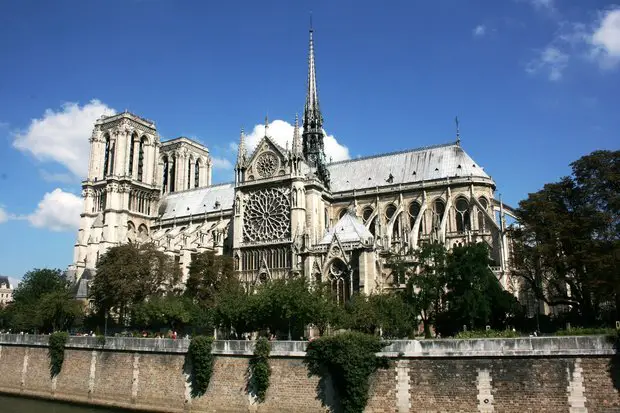
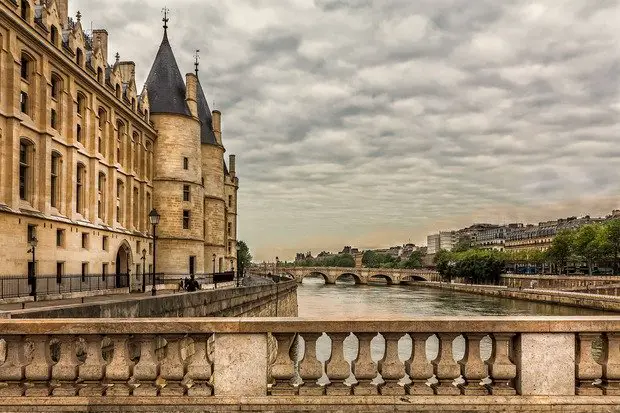
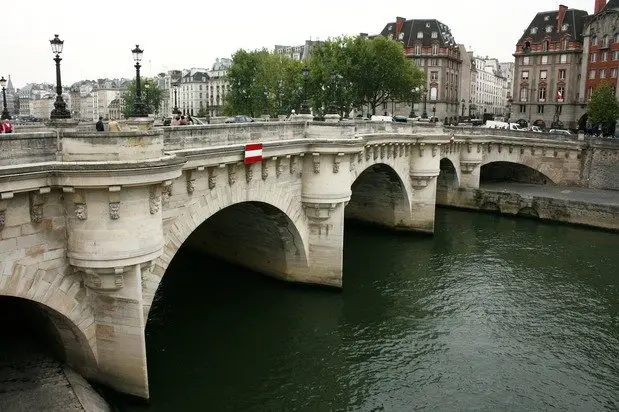
For this first ride, take your cameras on board and come discover the heart of Paris.
Surrounded by the two arms of the Seine, the Ile de la Cité contains, in addition to Notre-Dame or the Sainte-Chapelle, lesser-known landmarks, witnesses of the island’s medieval past.
On the program: Notre-Dame, the Hôtel-Dieu, the Clock Tower of the Conciergerie, and many other treasures…
- The walk begins on the Petit-Pont, the shortest bridge in the capital which was the only crossing point to the left bank until the 14th century.
- Then, head to the square in front of Notre-Dame, where you can not only admire the majestic cathedral but also, if you look down, discover the lines of light-colored cobblestones which outline the contours of the Saint-Etienne Basilica, destroyed in the 12th century to raise the cathedral.
- Staying on the forecourt, you can also admire the Hôtel-Dieu, the oldest hospital in Paris, which once housed the poor and needy.
- Going along the Hôtel-Dieu, turn left on Rue d’Arcole, then right on Rue Chanoinesse, where you will find some medieval remains and a macabre urban legend about a barber and his butcher neighbor who would have murdered their customers here…
- After taking Rue Massillon, then Rue des Chantres, turn left to Rue des Ursins, which now houses the Hôtel de la Motte-Montgaubert, one of the only places to still bear traces of the Parisian Middle-Ages. Moreover, in this street are the remains of the Saint-Aignan Chapel, one of the many religious buildings on the Ile de la Cité at the time.
- If you feel like it, venture into Rue de la Colombe, at the end of Rue des Ursins. In the middle of this street, you can still see two lines of thick cobblestones, where the island’s perimeter wall once stood to protect the city from invaders.
- Get out of the alleys to find yourself near the Seine, on the Quai aux Fleurs, then Quai de la Corse, and take a stop in front of the Pont Notre-Dame, the first bridge of Paris on which the houses have been numbered.
- Continue along the Seine to arrive in front of the Clock Tower and the Conciergerie, home of the Kings of France before the Louvre, and which hosted Queen Marie-Antoinette during the French Revolution. If you look up (or venture out on Boulevard du Palais), you can admire the Sainte-Chapelle, built during the reign of Saint Louis to house relics.
- End your walk on the Quai de l’Horloge, up to Pont-Neuf, the oldest bridge in Paris, whose particularity is that it was the first bridge to not have houses… to preserve the view of the Louvre.
2/ From Saint-Germain-l’Auxerrois to Saint-Eustache
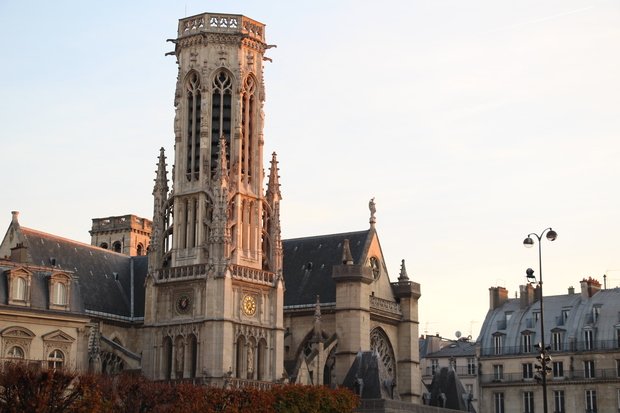
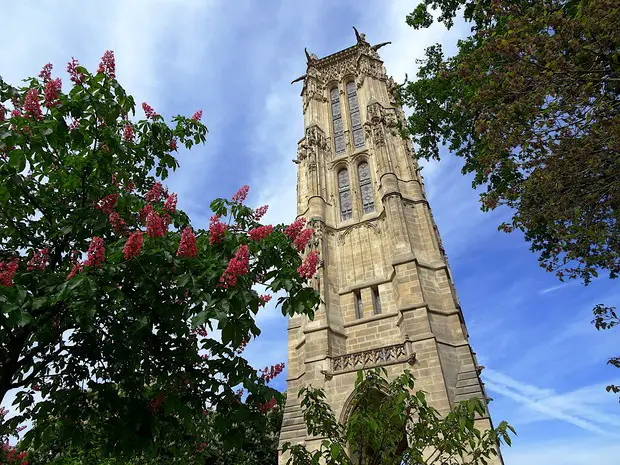
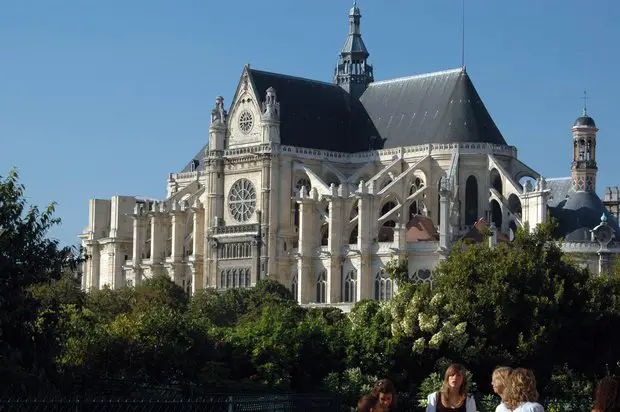
Passing by famous churches or their vestiges, here is a route filled with symbolism, with an aftertaste of tragedy.
On the program: The Saint-Germain-l’Auxerrois church, the former Innocents cemetery, the Saint-Jacques Tower, or the Saint-Eustache church.
- The walk begins at the foot of the Saint-Germain-l’Auxerrois church, infamous in French history for having given the signal for the massacre of Saint-Barthélémy.
- From the church, take the direction of Place de l’Ecole, then turn left on Rue de l’Arbre Sec, right on Rue de Rivoli, left on Rue des Déchargeurs and again left on Rue des Halles. Turn right Rue de la Lingerie, then right again.
- Here you are in the Rue de la Ferronnerie, which owes its notoriety to an assassination. It’s in this street that King Henri IV was killed. A slab on the ground marks its location.
- From Rue de la Ferronnerie, turn left and go to Place Joachim du Bellay, from there you will be able to observe the Fontaine des Innocents, the last vestige of the Cemetery that once stood on this square.
Retrace your steps and take Rue Sainte-Opportune. In the forenamed square, turn right to return to Rue des Halles. Go left towards Place du Châtelet. - On this street, you will see the Saint-Jacques Tower, a vestige of the old Saint-Jacques church, destroyed during the French Revolution. This tower marks today the starting point for pilgrimages to Santiago de Compostela.
- From Place de Châtelet, turn left on Boulevard de Sébastopol. Then turn right on Rue Rambuteau. Turn left on Rue Beaubourg and then right on Rue de Montmorency.
- This street, which once housed the residence of the lords of the same name, also had the oldest half-timbered residence in Paris, at number 51. It was also the home of the famous alchemist Nicolas Flamel.
- Make a U-turn in order to take Rue de Montmorency in the other direction, then take Rue du Bourg-l’Abbé, then Rue de Turbigo. Follow this street for about 400 meters, then turn right on Rue Montmartre, and finally left on the impasse Saint-Eustache.
- You are in front of the Saint-Eustache church, the largest in Paris, after the Notre Dame cathedral… But it still lacks its southern tower!
3/ The Marais and its Hotels, Symbols of the Grand Siècle
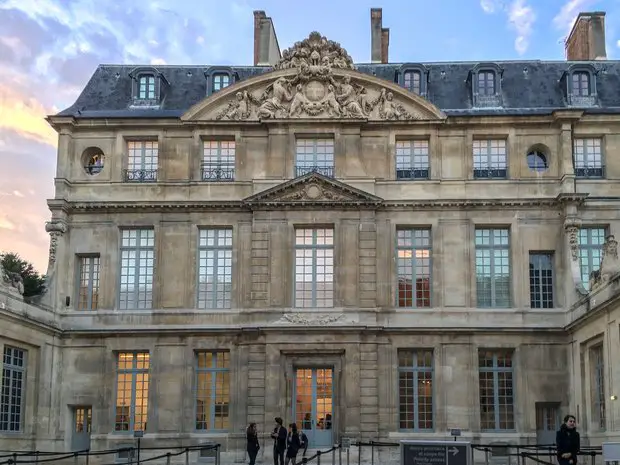
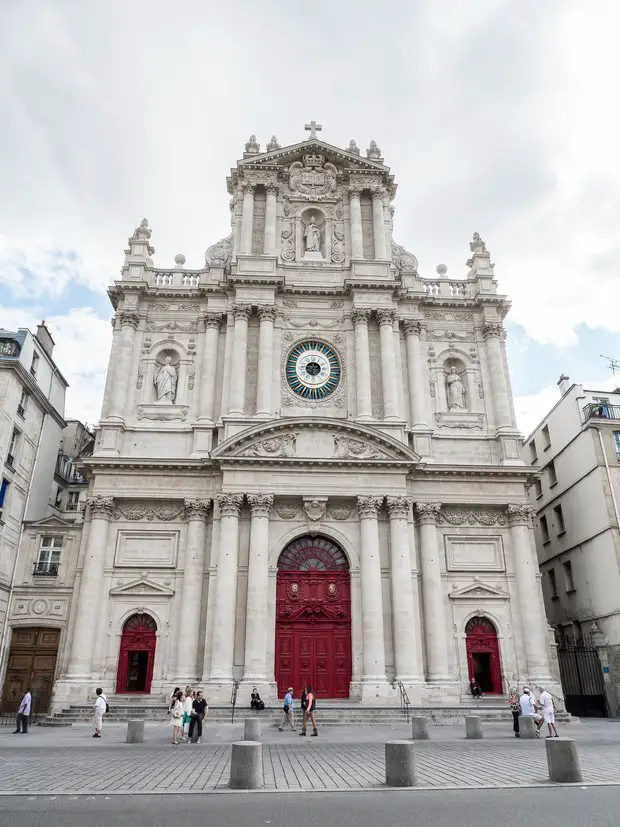
The Marais is one of the most historic districts in Paris.
Initially a marshy area, in the 17th century it became a privileged district of residence for the nobility and the Parisian bourgeoisie.
Even today, many mansions, symbols of this wealth, overlook the streets of this district.
On the program: The Hôtel de Soubise, the Hôtel Salé, the Hôtel de Lamoignon, or the Lycée Charlemagne, the Hôtel d’Aubray and the Hôtel de Sully.
- The walk begins at 60 Rue des Francs-Bourgeois, in front of the Hôtel de Soubise. This mansion was the home of the Princess of Soubise, one of Louis XIV’s favorite concubines. Since the beginning of the 19th century, it has housed the National Archives.
- At the end of Rue des Francs-Bourgeois, turn left on Rue Vieille-du-Temple, then right on Rue de la Perle. At number 1 is a mansion in which Molière is said to have started his first troop.
Then take a left on Rue de Thorigny. At number 5 stands the Hôtel Salé. This buildings, one of the largest in the Marais, owes its name to the work of its first owner, collector of the salt tax. It once housed the Gruss Circus, and today has become the Picasso museum. - Take Rue Sainte-Anastase, to the right of Rue de Thorigny, then turn right on Rue de Turenne. At number 56, you can admire a relatively modest house, which was the home of Scarron and his wife, Françoise d’Aubigné, who later became the famous Madame de Maintenon.
- Continue on Rue de Turenne and turn right on Rue du Parc Royal. Take left on Rue Payenne and continue on Rue Pavée. At number 24 on this street is the Hôtel de Lamoignon, formerly the Hôtel d’Angoulême and property of Diane de France. It now houses the Historical Library of the City of Paris.
- Continue on Rue Pavée to Rue de Rivoli. Cross the street to take Rue du Prévôt, and turn left on Rue Charlemagne. At number 14 is located the current Lycée Charlemagne, formerly the house of the Jesuits.
- Continue on Rue Charlemagne and turn right on Rue Saint-Paul, then left and take Rue Charles V. The Hôtel d’Aubray, at number 12, was the home of the Marquise de Brinvilliers, one of the most famous poisoners of the Kingdom of France. At number 15, you can admire a grotesque figure sticking out its tongue above the door.
- Walk Rue Charles V and turn left on Rue Beautreillis, then again left on Rue Saint-Antoine. At number 62 on this street, you can see the Hôtel de Sully, home of the famous minister and friend of Henri IV. At number 99 on the same street is the Saint-Paul Saint-Louis church, which has long housed the hearts of Louis XIII and his son Louis XIV, which have disappeared during the French Revolution.
If you want, you can end your walk by taking Rue de Sévigné, named in honor of the famous Marquise de Sévigné.
At number 23 on this street is located the Hôtel Carnavalet, last home of the Marquise, which was born a few street away, at the Hôtel Coulanges, located at number 1 at Place des Vosges.
4/ The Quartier Latin, from Notre-Dame to Panthéon
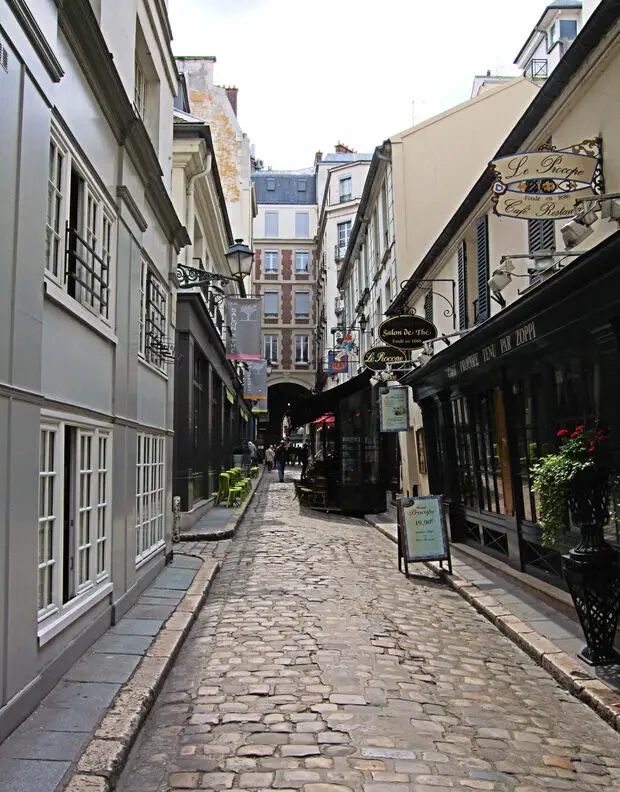

The Quartier Latin, which owes its name to the many higher establishments settled in its perimeter, is today considered as the student district of Paris whose heart is Sorbonne.
But in the 18th century, it was also the place of residence, not of the nobles, but of the bourgeoisie, lawyers, doctors and future prominent members of the French Revolution.
On the program: Notre-Dame, the Place Henri Mondor, Saint-Sulpice church or Sainte-Geneviève church.
- This route begins on the square in front of Notre-Dame cathedral. While a place of worship and imperial coronation, did you know that it served as a cellar to restore the armies of the Republic?
- Cross the Petit Pont and turn right at Quai Saint-Michel. Continue along the Seine, on the Quai des Grands Augustins, and turn left at Place Saint-Michel. Then turn right at Rue Saint-André-des-Arts. At number 59 on this street, overlooking the Cour du Commerce-Saint-André, is located the back door of the Procope café, a meeting place for Danton, Desmoulins and Marat.
- Continue your ride by turning left on Cour du Commerce-Saint-André. Join the Rue de l’Ancienne Comédie and then Boulevard Saint-Germain. On your left will be located the Place Henri Mondor with the statue of Danton. The statue marks the location of Danton’s home, which disappeared when the boulevard was built.
- Walk up Boulevard Saint-Germain to number 133. This is where the Prison de l’Abbaye used to stand, where many people were executed during the Revolution. The monument was destroyed when the boulevard was opened too.
- Go back a bit and take Rue du Four. Then turn left on Rue des Canettes and right on Place Saint-Sulpice. You will be right in front of the Saint-Sulpice church, a place which has seen many revolutionaries, like Desmoulins or Robespierre, but also generals, like Moreau or Bonaparte.
- Follow Rue Palatine, then turn right on Rue Garancière and left on Rue Vaugirard. Walk along the Palais du Luxembourg and its garden. When you arrive at Place Edmond Rostand, take Rue Soufflot to Place du Panthéon.
- You are now in front of the old Sainte-Geneviève church, transformed into the Panthéon in 1791 to accommodate the ashes of Mirabeau. Since then, the monument has welcomed many famous French men and women.
- On the left of the Panthéon, you can see the Saint-Etienne-du-Mont church on the Place Sainte-Geneviève. In the past, there was a cemetery surrounding the church which was later abandoned. If the church is open, don’t hesitate to enter. This is the only Parisian church where you still see a rood screen.
5/ Around the Opéra: the Paris of Haussmann
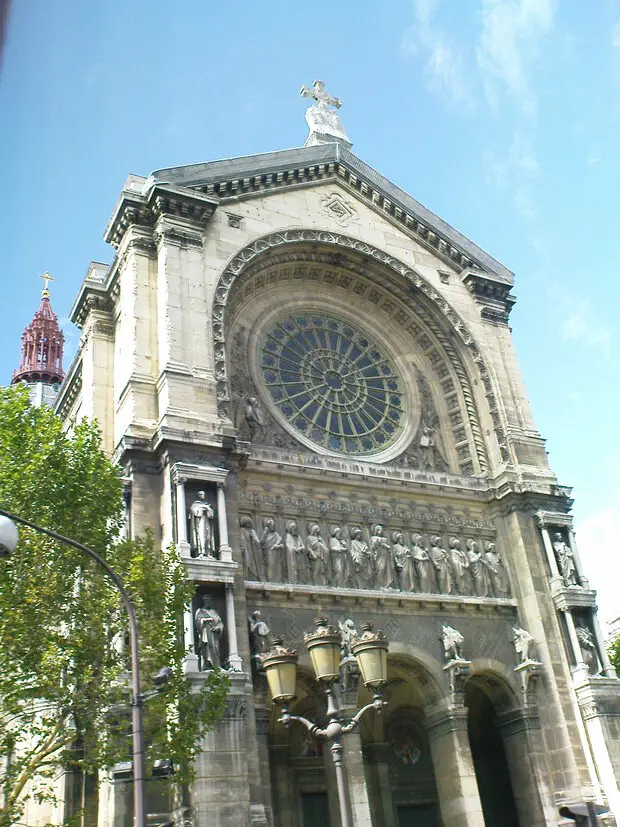
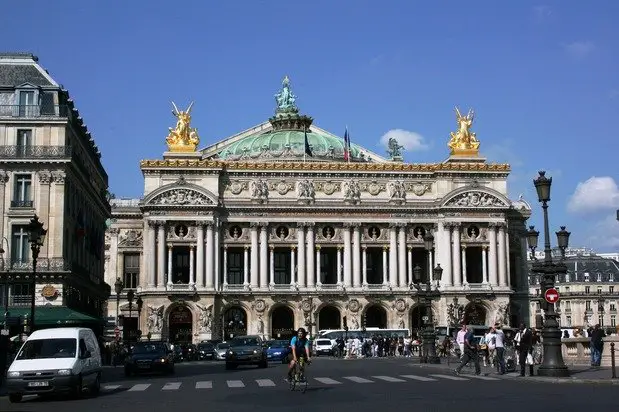
Nowadays considered as the fashion district of Paris, the surroundings of the Palais Garnier are also known for their typically Haussmannian architecture, with its wide avenues and buildings with their particular frontages.
So take your cameras and come and discover this famous avenue and its treasures.
By the way, don’t forget your purse, because if it’s a tourist district there will definitely be shops…
On the program: Le Printemps, the Café de la Paix, the Opéra Garnier, or the Crédit Lyonnais.
- This walk begins in front of the Saint-Augustin church, on the forenamed square. The church is an architectural jewel, both imposing and compact, designed by the protégé of Haussmann, Victor Baltard.
- Then join Boulevard Haussmann, and go down towards the Grands Magasins. At number 64 is located the most famous department store in Paris for international customers: Le Printemps. It now holds many different fashion brands.
- Leave by taking Rue de Caumartin and then Rue Auber, until you reach Place de l’Opéra. Contemplate several works created under Haussmann. At the corner of Place de l’Opéra and Boulevard des Capucines, you will find the Café de la Paix, social meeting place for people of that time, such as Victor Hugo, Gustave Flaubert or Emile Zola. If you look up, above the Café, stands the Grand Hôtel, built for the 1867 World’s Fair.
- But the star of this square is undoubtedly the Opéra Garnier, or Palais Garnier, a masterpiece of the Second French Empire, with the largest stage ever built in the world at that time. Formerly named the Opéra National de Paris, the Palais Garnier now shares this title with the Opéra Bastille which was built much later.
- Take the time to admire the Opéra before turning back. In front of you is the Avenue de l’Opéra, with its sensation of uninterrupted frontages and its lack of greenery. No tree has been planted on this avenue. In fact, Charles Garnier, the architect of the Opéra, didn’t want to obstruct the view.
- Walk the Avenue de l’Opéra (and let yourself be tempted by its many shops) up to Place André Malraux. On this square is located the Hôtel du Louvre, the second luxury hotel of Paris, built to welcome wealthy customers of the time, and fill the Hôtel Meurice.
- Retrace your steps and take Rue Sainte-Anne. You are now in the Japanese district of Paris. Continue on Rue Sainte-Anne and then take Rue de Gramont to Boulevard des Italiens. In front of you, at number 17, stands a building belonging to Crédit Lyonnais. Formerly, when it was built, it was the most luxurious bank in the world.
- Then take Rue Lafitte for about 400 meters, before turning left on Rue de la Victoire. At number 44 stands the Grande Synagogue de Paris, built under the Second French Empire.
- Continue walking on Rue de la Victoire, then turn right on Rue de la Chaussée d’Antin and continue straight until Place d’Estienne-d’Orves. The last monument of this walk is the Sainte-Trinité church, the second main church built under the Second French Empire, along the Saint-Augustin church.
6/ The Cité Internationale Universitaire de Paris: the world in miniature
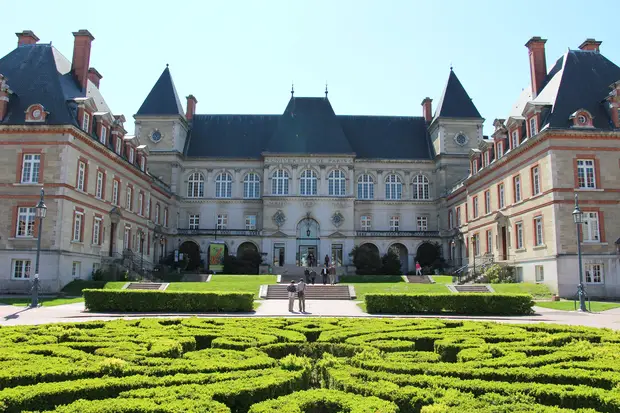
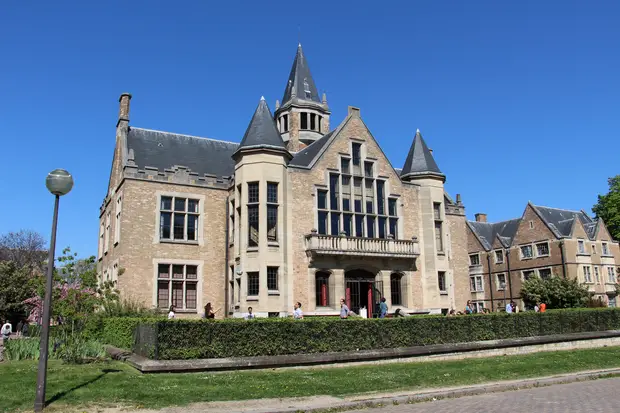
Want a relaxing and exotic stroll without leaving Paris?
Why not go for a walk through the alleys of the Cité Internationale Universitaire de Paris?
With its 34 hectares (10 more than the Jardin du Luxembourg) and its forty pavilions, the place that Parisians commonly call the “cité U” promises you a relaxing stroll among its “houses” around the world.
Here, we have no itinerary but let yourself be guided by the city plan, or stroll as you wish. However, some houses are worth a detour.
The “houses” you must absolutely see:
- Houses classified as Historic Monuments: the Dutch College, the Swiss Foundation, the Emile and Louise Deutsch de la Meurthe Foundation, the House of Brazil.
- The House of Japan, built in traditional Japanese spirit and intended to accommodate the elite students from Japan, inaugurated in 1929.
- The House of Province de France, inaugurated in 1933, which is the largest pavilion in the city.
- The House of Morocco with its monumental Morrocan style door and its Andalusian patio, inaugurated in 1953.
- The Swedish Student House, with its blue shutters, inaugurated in 1931.
You are still not tired after walking the alleys of the Cité Universitaire?
So cross the street and discover the Parc Montsouris, with its lake populated by swans, its waterfalls and its beautiful trees.
I aim to share my tips and recommendations for the beautiful country of France. My goal is to help you plan your next adventure, whether it’s a weekend getaway or a once-in-a-lifetime trip. From finding the best hotels and restaurants, to discovering unique activities and sights, I’ve got you covered!

